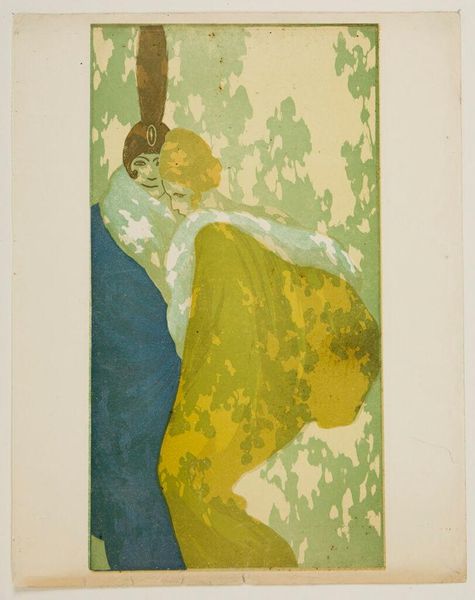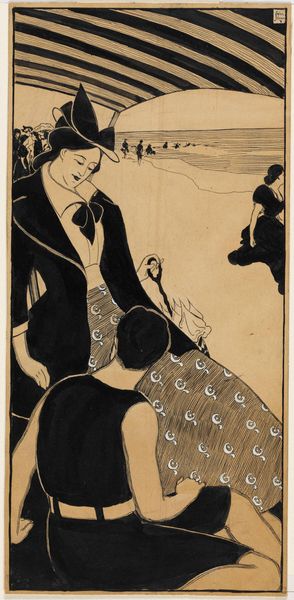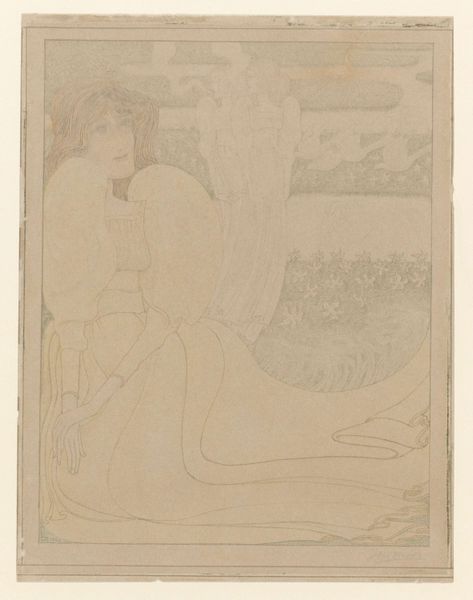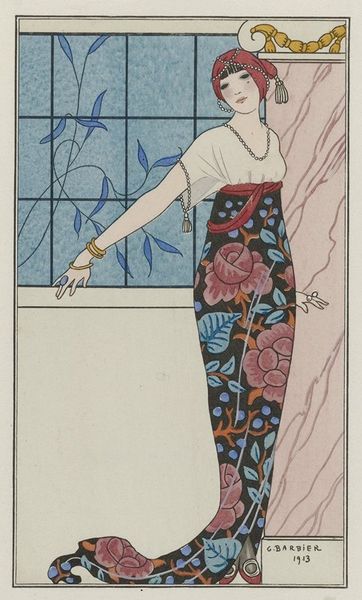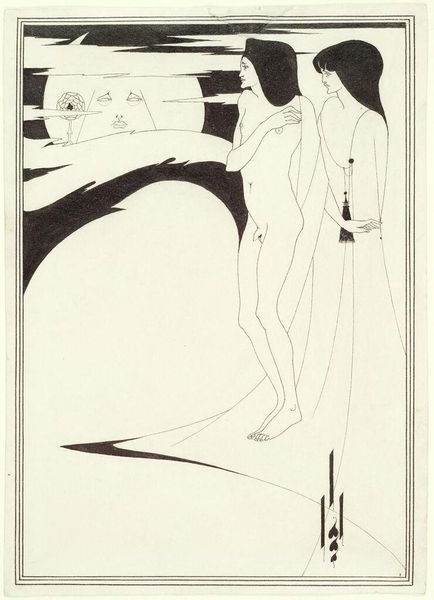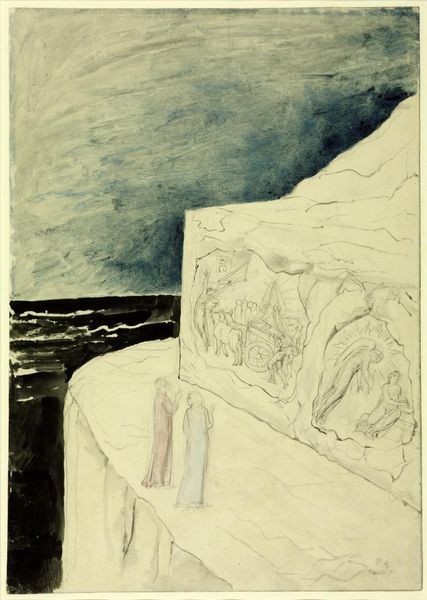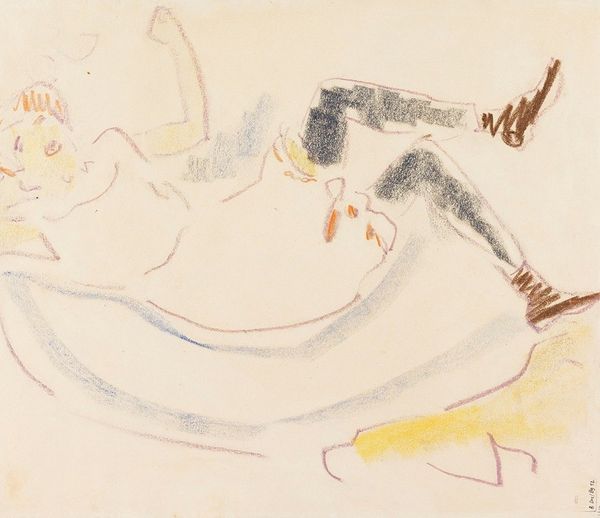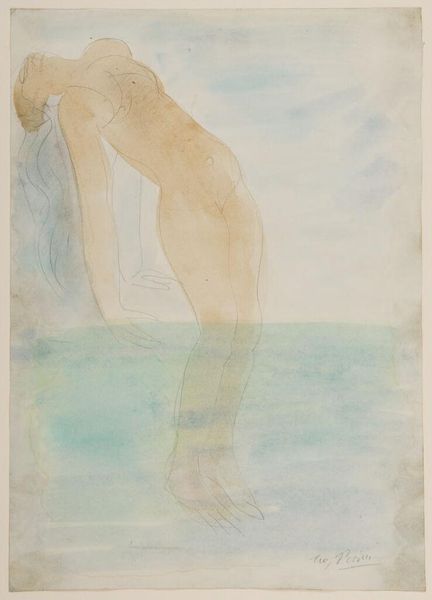
Copyright: Public Domain: Artvee
Henri de Toulouse-Lautrec created 'La Passagère Du 54' as a color lithograph in late 19th-century France. The artwork encapsulates the burgeoning leisure culture of the Belle Époque, a time when travel became increasingly accessible to the upper classes. The image portrays a woman, presumably a passenger on a ship, gazing out at the sea. This scene reflects the social norms of the time, where leisure activities and travel were markers of status. Toulouse-Lautrec, known for his depictions of Parisian nightlife, here turns his eye to the more sedate world of maritime travel, but his interest in the social milieu remains. How does the artist frame this subject as part of the upper class? We might consider the rise of tourism and the institutional development of leisure activities during this period. This artwork encapsulates a specific moment in social history. To understand this print better, we can look into archives and social histories. In so doing, we can start to understand the culture of leisure and class distinctions of the late 19th century.
Comments
No comments
Be the first to comment and join the conversation on the ultimate creative platform.
